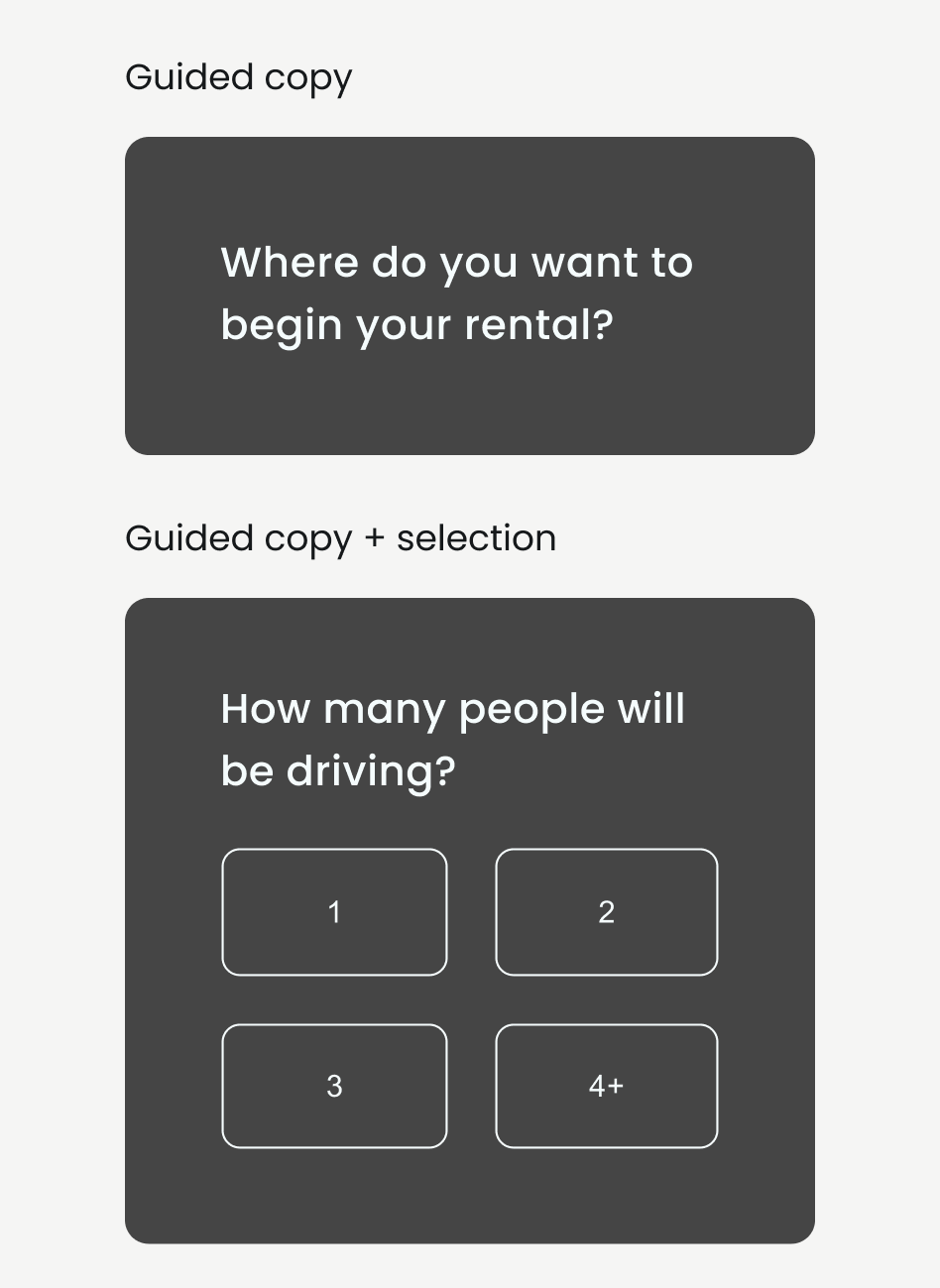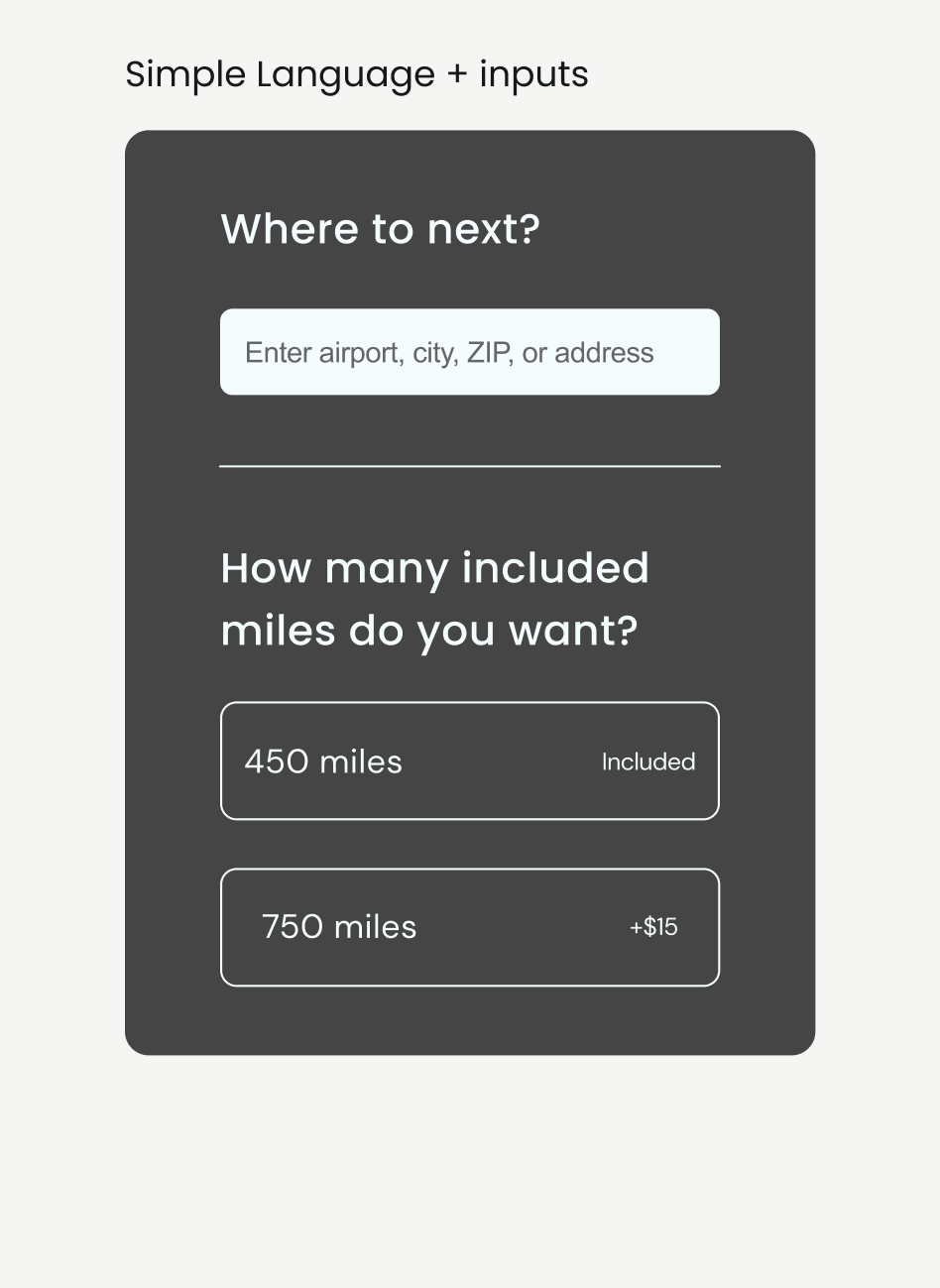Elevate the online car booking experience to new heights within the market.
Expert Review • Experience journey • Stakeholder interviews • User interviews • Field observation • Benchmarking • Wireframing • Look and feel • Experience strategy • Hi-fidelity mockups • Prototyping • Refinement & Iteration
Overview
Enhance the booking experience by providing convenient and streamlined options for incremental purchases, taking into consideration key factors such as location, timing, and pricing, while eliminating the need for a physical checkout counter.
Client
Sixt, Germany
Duration
10 months
Role
As product designer and design lead, I designed the experience and ensured that the research, exploration, and iteration process was documented, curating content and UX patterns along the way. To achieve this, I fostered a close relationship with the client, working collaboratively and streamlining communication.
The Ask
Craft an unparalleled online experience that not only simplifies the steps for renting a car but also serves as the most efficient journey. Transform the car rental setup into a single, user-friendly page, promising a swift, enjoyable, and trustworthy rental experience.
Business Context
Sixt is one of the most globally recognized car rental companies, continually striving to reach more users digitally, eliminating counter queues and paperwork. To achieve an efficient experience, they needed to address several points:
Reduce the abandonment rate during checkout
Minimize calls to the support center
Streamline the experience with as few steps as possible.
Challenges faced during the project
-

1. Adapting plans and timelines to conquer change and addiction.
Throughout our collaboration with Sixt over several months, we encountered significant client-driven changes and additional requirements, necessitating multiple adaptations to our timeline, prioritization, and tasks. These adjustments were crucial to successfully achieve project objectives and optimize the utilization of our resources.
-

2. Utilizing best practices for rapid prototyping.
For this project, we implemented a unique approach to incorporating best practices into the user experience design process. Specifically, we utilized successful flows from top-performing brands but tailored them to the car booking product we were designing. By doing so, we were able to optimize the user experience while still maintaining a distinct and effective design.
-

3. Balancing innovation with the imperative to replace a subpar experience.
Initially, the task was to define and design a vision for Sixt's future mobility service, but the requirements evolved over time, culminating in the need to implement changes within the existing system to facilitate a relaunch.
The Four Experience Principles
-
Conversational
A human connection

-
Accessible
Put People in Control

-
Scalable
Thinking of the Future

-
Ease
Beautifully Simple

-
Outcomes
We have established a comprehensive core flow for the booking and post-booking experience, streamlining the process by incorporating new interactions and guidance while providing the user with timely and relevant information. This approach offers users the flexibility to customize their preferences.
We developed a cohesive Design System to a significant extent, enabling the development team to commence production with well-defined guidelines to follow.
-
Take aways
Simplicity, speed, and flexibility feel premium
To achieve this, we integrated established patterns from industry leaders and incorporated the latest interaction techniques and top UX practices from the technology industry.
Scaling up the global team efficiently and effectively
To speed up the design process, we identified essential roles for our globally distributed team across America, Europe, Asia, and Africa, emphasizing effective communication and clear objectives for successful collaboration.
Partnering with Sixt’s internal teams and understanding the internal hierarchy.
Developing a strong rapport with the client was pivotal in supporting them in standardizing approval processes, setting goals, and conducting feedback sessions. Our efforts to encourage internal alignment were directly reflected in our work processes.

